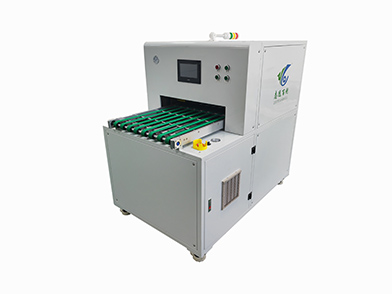Dongguan Zhiyuan Baili Automatic Equipment and Technology Co., Ltd.
Dongguan Zhiyuan Baili Automatic Equipment and Technology Co., Ltd.
Electrostatic precipitator is a highly efficient air purification technology that uses an electrostatic field to ionize gas and charge dust particles, which are then adsorbed and collected. It is widely applied in industrial waste gas treatment, indoor air purification, and special environment control, among other fields. Its core functions can be summarized as follows:
1. Efficiently remove particulate matter
Fine particle capture: Electrostatic precipitators can capture particles with diameters ranging from 0.01 to 100 micrometers, including PM2.5, dust, smoke, etc. They are particularly effective in removing sub-micron particles (such as fine particles produced by combustion), with an efficiency of over 99%.
Multi-pollutant co-treatment: It can simultaneously remove aerosols, liquid droplets and some heavy metal particles (such as mercury and lead), and is suitable for flue gas purification in industries such as steel, cement and power.
2. Improve air quality and the environment
Industrial waste gas treatment: In scenarios such as coal-fired power plants and waste incineration plants, electrostatic precipitators can effectively reduce smoke and dust emissions, lower air pollution, and help enterprises meet environmental protection standards (such as China's "Integrated Emission Standard of Air Pollutants").
Indoor air purification: Household or commercial electrostatic precipitators can remove indoor dust, pollen, pet hair and other allergens, improving the living or working environment, and are especially beneficial for people with asthma and allergies.
No secondary pollution: Compared with wet dust removal, electrostatic dust removal does not produce wastewater or slurry, thus avoiding the risk of secondary pollution.
3. Protect equipment and extend its service life
Reduce equipment wear and tear: In industrial production, dust can accelerate the wear of mechanical components such as fans and pipes. Electrostatic precipitators can reduce equipment failure rates and extend service life.
Preventing clogging and corrosion: Removing particulate matter from flue gas can prevent clogging of equipment such as heat exchangers and dust collectors, and reduce corrosion problems caused by the combination of acidic gases (such as SO₂) and particulate matter.
4. Support special industry demands
Electronic manufacturing: In cleanroom environments such as semiconductor and chip production, electrostatic precipitators can maintain ultra-low particle concentrations (such as Class 10), ensuring product quality.

Pharmaceutical and food industry: Remove microorganisms, fibers and other impurities in the production environment to meet GMP (Good Manufacturing Practice for Pharmaceuticals) or HACCP (Hazard Analysis and Critical Control Points) requirements.
Laboratories and hospitals: Provide a sterile environment to prevent cross-infection or experimental contamination.
5. Energy conservation and resource recycling
Low air resistance design: The pressure drop of the electrostatic precipitator is small (usually less than 200Pa), and compared with the bag filter, it can reduce the energy consumption of the fan by about 30%, saving operating costs.
Valuable material recovery: In industries such as metallurgy and chemical engineering, electrostatic precipitators can recover metals (such as zinc and copper) or valuable materials from dust, achieving resource recycling.
6. Adapt to complex working conditions
High-temperature and high-pressure treatment: Some electrostatic precipitators can withstand high temperatures (such as above 500℃) or high-pressure gases, and are suitable for high-temperature flue gas treatment in boilers, furnaces, etc.
Corrosive gas treatment: By choosing corrosion-resistant materials (such as fiberglass reinforced plastic, alloys), waste gas containing acids, alkalis or chlorides can be treated.
Explosion-proof design: In flammable and explosive environments (such as coal powder silos and chemical workshops), the use of explosion-proof electrostatic precipitators can ensure safe operation.
7. Promote intelligence and automation
Real-time monitoring and regulation: Modern electrostatic precipitators can integrate sensors to monitor parameters such as electric field intensity and dust concentration in real time, automatically adjust voltage and airflow, and optimize dust removal efficiency.
Integration with the Internet of Things: Through the remote monitoring platform, equipment status early warning, fault diagnosis and energy consumption analysis can be achieved, improving management efficiency.
8. Environmental compliance and sustainable development
Meet emission standards: Help enterprises comply with national or local environmental protection regulations and avoid fines or production halts due to excessive emissions.
Carbon reduction contribution: Reducing particulate matter emissions can lower the concentration of PM2.5 in the atmosphere, indirectly reducing health problems and medical costs caused by air pollution, and supporting the realization of the "dual carbon" goals.
Limitations of Electrostatic Precipitators and supplementary solutions
Ineffective for gaseous pollutants: It needs to be used in combination with desulfurization and denitrification equipment to form an integrated treatment system.
The initial investment is relatively high, but the long-term operating cost is low, making it suitable for large-scale continuous operation scenarios.
Regular maintenance is required: The electric field plates need to be cleaned to prevent efficiency decline. Some equipment is equipped with an automatic cleaning function.
Summary
Electrostatic precipitators, through the principles of physical ionization and adsorption, achieve efficient, low-consumption and non-secondary pollution removal of particulate matter, playing a key role in industrial environmental protection, indoor air quality improvement and clean control in special industries. With the development of technology, its intelligent and modular design has further expanded its application scenarios and has become an important means of modern air pollution control.
